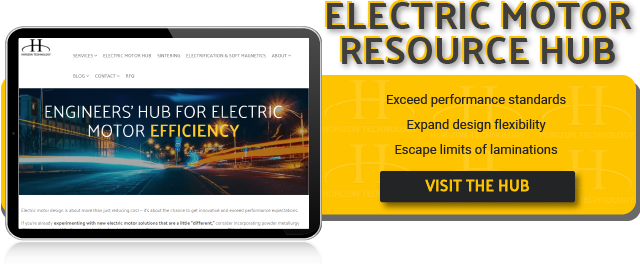You’d have a hard time finding a vehicle today that doesn’t have several auxiliary electric motors. Even internal combustion engines use electric motors throughout the vehicle.
These electric motors control the air compressor, windshield wipers, radiator fans, blower motors, and pretty much everything else in the vehicle. But why doesn’t anyone ever talk about these motors? All we ever hear about are drivetrain motors -- which are important -- but they’re only a part of the future of electrification.
In this blog post we’ll break down the different kinds of electric motors used in EVs and how we can start upping their efficiency.
Efficiency of Internal Combustion Engines vs. Electric Motors
Internal combustion engine vehicles have been using small electric motors to power their auxiliary functions for decades, and they haven’t really ever had an impact on vehicle efficiency.
An 8-cylinder engine creates so much power that worrying about auxiliary efficiency was never really an issue. The 12v battery pack and alternator were more than enough to power the windshield wipers, seat adjusters, radio, electric windows, etc.
Electric vehicles have a battery pack, too, but that battery pack is powered via a DC-to-AC converter hooked to the high voltage battery that powers the motor. Every extra motor takes away a fraction of power from the main battery, reducing its overall range.
Perhaps one of the largest enemies of EV battery range is the heating/cooling system:
Heating, Cooling, and Electric Vehicle Motors
All new vehicles must have heating/cooling systems for the cabin. For ICEs, that’s a fairly simple task; the heat generated by the engine is passed through the heater core, making its way to your cabin. At least in that regard, ICE vehicles are sustainable.
Heating and cooling aren’t so simple in electric vehicles. The motor doesn’t generate enough heat to be reused elsewhere, and any amount of power taken away from the battery pack can reduce the vehicle’s range. Depending on outside temperatures, vehicle range could be reduced by up to 35% while using auxiliary heating/cooling.
Since having a heated cabin in the winter and a cool cabin in the summer is a must, how can we make that process more efficient for electric vehicles? Some engineers are toying with advanced humidity removal systems to make heating and cooling more efficient. But, we in the PM world are thinking about the motors, as always.
So how do we fix that?
Making auxiliary motors more efficient is a good start.
PM Motor Design for EV Auxiliary Systems
The simple brushed DC electric motor is a tried-and-true system, however, modern customer requirements demand greater flexibility, including more concise control of motor speeds and efficiency.
Brushed DC motors for electric vehicle auxiliary systems are far from efficient, consuming a lot of valuable energy, which can reduce the range of an EV. Modern motors have inherently higher power than older DC motors, which presents cost, size, and weight savings while offering more precise control over energy consumption.
Not only would this practice save energy, it also opens the door to use soft magnetic composite (SMC) materials in the rotor as well as the stator.
SMC Materials for Electric Vehicle Motors
Typically, SMC materials are only used in the electric motor’s stator to increase magnetic performance and reduce overall motor weight.
However, if electric motors that run at slower speeds are introduced in the modern EV, it allows engineers to play with the design of the rotor in addition to the stator.
Historically, the rotor couldn’t be made using SMC material because the centrifugal force of the motor puts high stress on the rotor. SMC isn’t the strongest powder metal material, so to prevent failure, the rotor needed to be a different material.
But, lower-speed motors means less centrifugal force, which in turn means less stress on the rotor.
We’ve seen that SMC rotors in low-stress motors -- like in power tools -- consume about 20% less energy. That would be a big plus for electric vehicles that are already struggling to conserve power.
No Electric Motor Left Behind
We’ve talked a lot about how to improve auxiliary motors for electric vehicles, but don’t be fooled -- these same principles can be applied elsewhere. Think e-scooters, power tools, electric lawn equipment and HVAC applications. All of these areas use electric motors in some fashion, and many are just like the small electric motors in cars.
Improving magnetic performance in a cordless drill motor is pretty similar to improving performance of a windshield wiper motor.
Want to learn more about how to use powder metal material and processes to improve electric motor efficiency? Check out our Engineers’ Hub for all the details!



